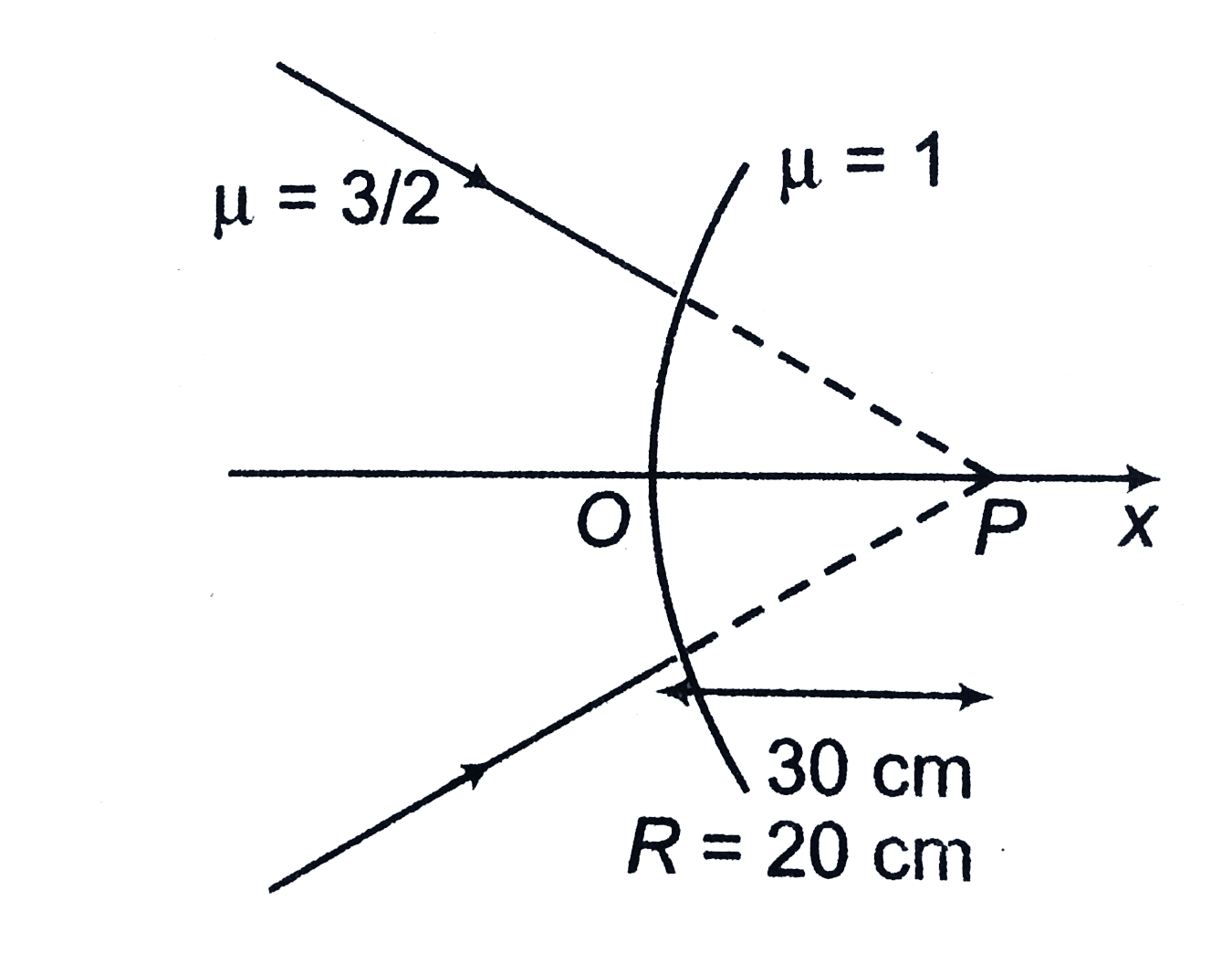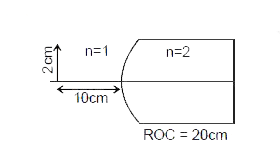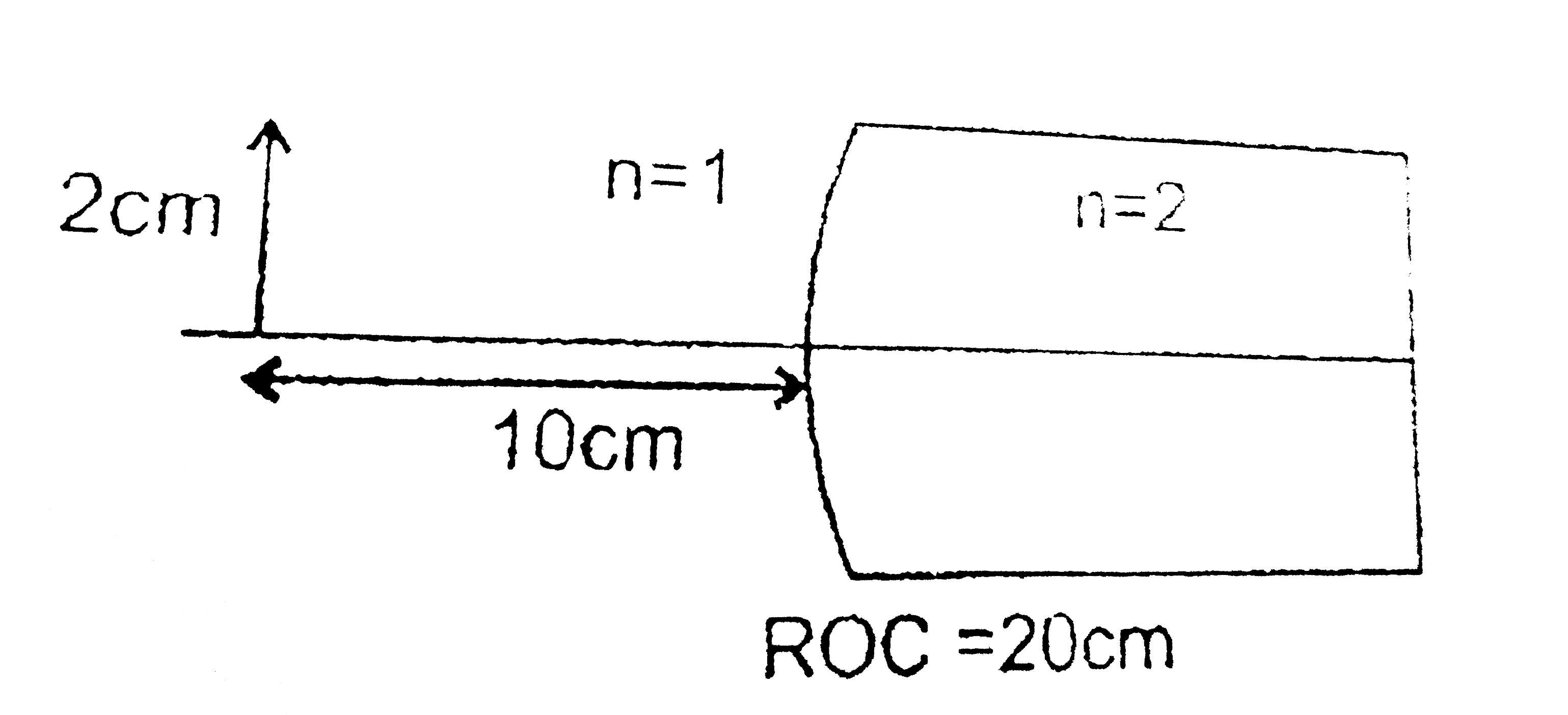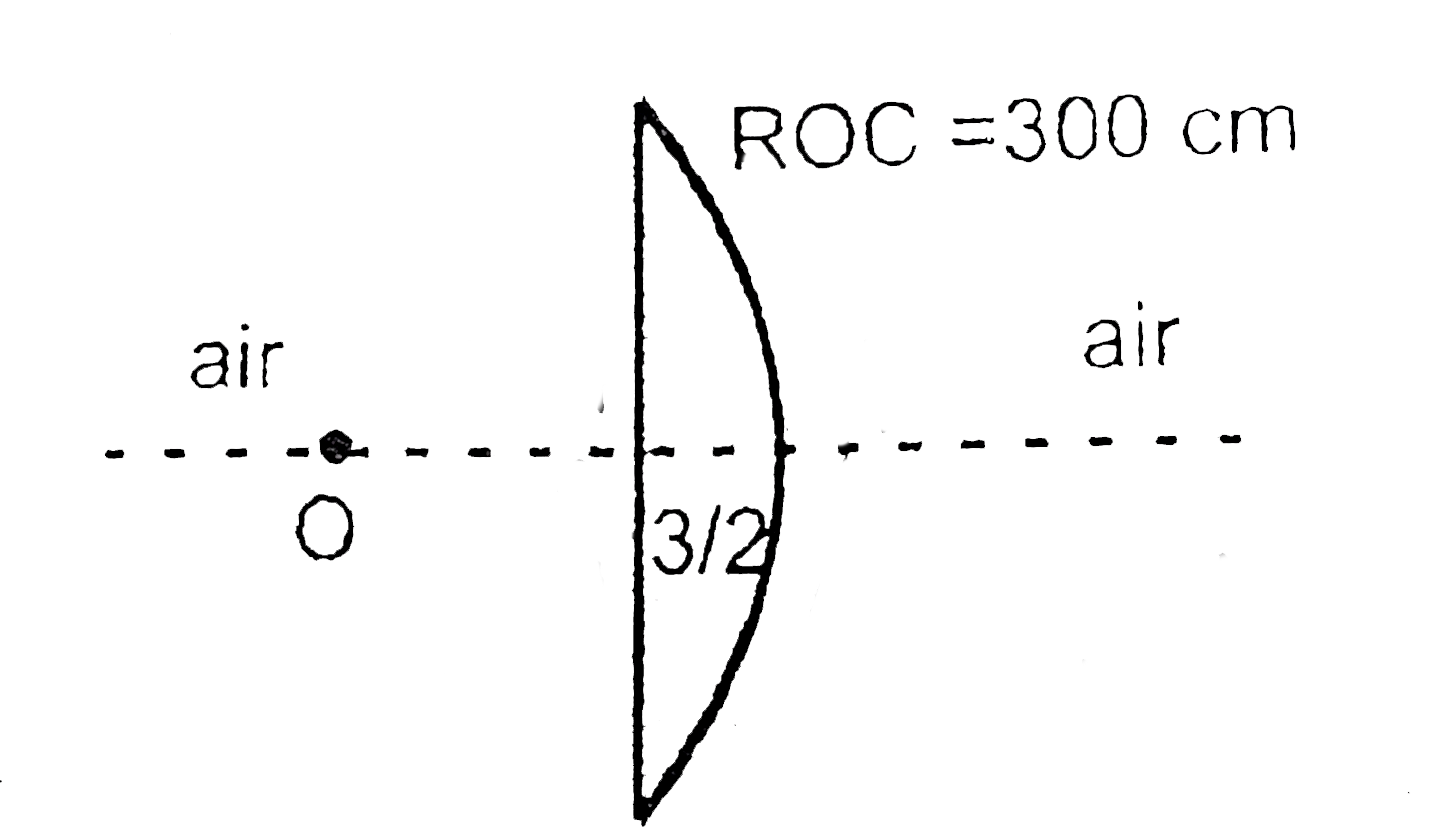The image for the converging beam after refraction through the curved surface is formed at

x=40 cm
x=403cm
x=−403cm
x=1807cm
The correct Answer is:A
1V−32×30=1−32+20,1V=−140+120=+140,V=40cm
Topper's Solved these Questions
Similar Questions
Knowledge Check
- Question 1 - Select One
An extended object of size 2 cm is placed at a distance of 10 cm in air (n = 1) from pole, on the principal axis of a spherical curved surface. The medium on the other side of refracting surface has refractive index n = 2. Find the position, nature and size of image formed after single refraction through the curved surface.
 A30 cm from pole in the medium of refractive index 1, virtual, erect and 4 cm in size.B40 cm from pole in the medium of refractive index 1, virtual, erect and 4 cm in size.C40 cm from pole in the medium of refractive index 1, real, inverted and 4 cm in size.D30 cm from pole in the medium of refractive index 1, virtual, erect and 6 cm in size.
A30 cm from pole in the medium of refractive index 1, virtual, erect and 4 cm in size.B40 cm from pole in the medium of refractive index 1, virtual, erect and 4 cm in size.C40 cm from pole in the medium of refractive index 1, real, inverted and 4 cm in size.D30 cm from pole in the medium of refractive index 1, virtual, erect and 6 cm in size.
Figure shows a transparent hemisphere of radius 3'0 cm made of a material of refractive index 2.0. (a) A narrow beam of parallel rays is incident on the hemisphere as shown in the figure. Are the rays totally reflected at the plane surface ? (b) Find the image formed by the refraction at the first surface. (c) Find the image formed by the reflection or by the refraction at the plane surface. (d) Trace qualitatively the final rays as they come out of the hemisphere.
 View Solution
View SolutionImage formation by refraction from plane and curved surface
View SolutionAn extended object of size 2cm is placed at a distance of 10cm in air (n=1) form pole, on the other side of refracting surface has refractive index n=2. Find the positon, nature and size of image formed after single refraction through the curved surface.
 View Solution
View SolutionCurved Surface Refraction
View SolutionCurved Surface Refraction
View SolutionAn object is placed 50cm from the surface of a glass sphere of radius 10cm along the diameter. Where will the final image be formed after refraction at both the surfaces ? μ of glass =1.5.
View Solution
Plane surface of a thin planoconvex lens reflects 50% of light, while the curved surface is completely transparent, if final image of O after refraction through lens coinsides with the image formed due to partial reflection from plane surface. if distance (in m) between O and lens is x then find x/4View Solution

